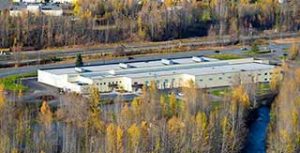
Hatchery produced salmon contributed 47 million fish, or 21 percent of the total 2017 Alaska harvest, a catch worth an estimated $331 million first wholesale value and worth $162 million in ex-vessel value. This represents the lowest percentage of hatchery-produced fish in the harvest since 1995, according to the 2017 Alaska Fisheries Enhancement Report produced by the Alaska Department of Fish and Game (ADF&G). The lower hatchery contribution was due to strong returns of wild stocks in 2017, the third highest in Alaska history.
An additional 194,0000 Alaska hatchery-produced fish were caught in the sport, personal use and subsistence fisheries.
ADF&G officials note that hatchery production in Alaska is designed to supplement, rather than replace, wild stock production. Over the past five years, Alaska’s hatchery-produced salmon have returned alongside record returns of its wild stocks, with the 2013, 2015 and 2017 harvests constituting three of the four highest wild stock returns in history dating back to the late 1800s. The 2017 harvest of chum salmon was the highest, and pink salmon the fourth highest on record. Record returns were also recorded in areas of Alaska where there is no hatchery production, including coho salmon in Norton Sound, and pink salmon at Chignik and the Alaska Peninsula. The 2017 sockeye harvest in Bristol Bay was the third highest since 1975 and third consecutive year of strong harvests.[xyz-ihs snippet=”Adsense-responsive”]Twenty-five of the current 29 salmon hatcheries operating in Alaska are private nonprofit corporations, funded primarily from sale of a portion of hatchery returns. Two sport fish hatcheries are also operated by the state, one as a research hatchery for the National Marine Fisheries Service, and one for the Metlakatla Indian Community.
Hatchery salmon are reared through juvenile stage and released. Farmed fish, by comparison, are those reared in captivity to market size for sale. Farming of finfish, including salmon, is illegal in Alaska.
A copy if the Alaska Salmon Fisheries Enhancement annual report for 2017 is online at www.adfg.alaska.gov/FedAidPDFs/RIR.5J.2018.02.pdf
Fishermen’s News Online grants permission to the Alaska Native News to post selected articles. Read More at: Fishermen’s News Online.

